To grade an Indian Head penny, examine luster and wear on high points like the cheek, feathers, and bow knot. Uncirculated coins display full mint luster, while circulated coins show varying wear levels from Fair (minimal detail) to Very Fine (sharp details intact). Evaluate strike quality by checking shield line sharpness on the reverse. Assess color using RD (red), RB (red-brown), or BN (brown) designations for uncirculated coins. Inspect for imperfections including contact marks, carbon spots, and toning that affect value. Avoid cleaning coins as this significantly reduces worth. For copper-nickel varieties (1859-1864), color ranges from red to silver/white, though whiter doesn’t guarantee higher grades.
Indian Head pennies, minted from 1859 to 1909, represent one of America’s most beloved coin series. Whether you’ve inherited a collection or found one in an old drawer, knowing how to properly grade these copper classics can mean the difference between a $2 coin and a $200 treasure. The grading process focuses on four critical factors: luster quality, wear patterns, strike sharpness, and surface color. Professional numismatists at PCGS and NGC use these same criteria to assign grades from Poor-1 to Mint State-70, with each point potentially adding hundreds of dollars to value.
Understanding the Sheldon Grading Scale for Indian Head Cents
The Sheldon Scale runs from 1 to 70, with circulated coins graded from Poor-1 through About Uncirculated-58, and uncirculated specimens from Mint State-60 to MS-70. For Indian Head pennies, the most common grades you’ll encounter fall between Good-4 and Extremely Fine-45 for circulated examples, while uncirculated pieces typically range from MS-60 to MS-65.
Here’s a realistic value comparison for an 1879 Indian Head penny across different grades:
| Grade | Typical Value |
|---|---|
| Good-4 (G-4) | $3-5 |
| Very Fine-20 (VF-20) | $18-25 |
| Extremely Fine-40 (EF-40) | $45-65 |
| About Uncirculated-50 (AU-50) | $85-110 |
| MS-63 Red-Brown | $175-225 |
| MS-65 Red | $850-1,200 |
The grade designation dramatically impacts value because each level represents specific preservation characteristics that collectors actively seek. A two-point difference in the Mint State range can double a coin’s market price.
Examining Luster and Identifying Wear Patterns
Luster examination forms the foundation of grading Indian Head pennies. Original mint luster appears as a radial, cartwheel effect when you rotate the coin under a single light source. This characteristic sheen comes from the microscopic flow lines created during the striking process. On uncirculated Indian Head cents, this luster should be unbroken across the entire surface.
For uncirculated coins graded MS-60 and above, focus your examination on these critical high points: the cheek area of Liberty’s profile, the individual feather tips in her headdress, the bow knot ribbon ends, and the diamond shapes on the ribbon band. Under magnification with a 5x to 10x loupe, these areas should display complete luster with no texture changes. Even the slightest disruption to the flow lines indicates wear, immediately dropping the coin into the About Uncirculated category.
When examining circulated pieces, wear manifests in predictable patterns. Start with the highest relief points: Liberty’s cheek loses its roundness first, becoming flat and dull. The feather tips merge together as wear progresses, losing individual definition. On the reverse, the shield’s horizontal lines fade, and the wreath’s ribbon bow flattens.
For Fair-2 to Good-4 grades, expect heavy wear with the date barely visible but readable under magnification. The rim may merge with the field in spots. Good-4 to Very Good-8 coins show all major design elements present but heavily worn, with Liberty’s headband visible but the word “LIBERTY” partially worn away. Very Fine-20 to Extremely Fine-40 specimens retain sharp detail in the hair curls, three-quarters of the feathers show separation, and “LIBERTY” remains fully legible with all letters distinct.
The transition between About Uncirculated and Mint State represents grading’s most challenging assessment. AU-50 to AU-58 coins retain 90-98% of original luster but show slight friction on the absolute highest points. This friction appears as a subtle texture change rather than obvious flatness. Many collectors struggle here, often overgrading AU-58 coins as Mint State. The key difference: rotate the coin under light and watch for luster breaks on the cheek and feather tips.
Evaluating Strike Quality and Its Impact on Grade
Strike quality refers to how completely the dies transferred the design onto the planchet during minting. This factor proves particularly important for Indian Head pennies because the Philadelphia Mint experienced varying press pressures and die conditions across five decades of production.
Well-struck Indian Head cents display razor-sharp definition in Liberty’s hair strands, complete separation between individual feathers, and crisp shield lines on the reverse. The reverse shield should show four distinct vertical bars with sharp horizontal lines crossing them. On weakly struck examples, these shield lines appear soft or incomplete, even on uncirculated coins.
Certain dates have notorious strike weakness. The 1867 to 1869 issues frequently show incomplete shield details despite being uncirculated. The 1877 Indian Head penny, the series’ key date, often exhibits weak strikes in the feather area. Professional grading services account for these known deficiencies, so a weakly struck 1877 in MS-63 can still command $2,800 to $3,500 despite imperfect shield lines.
When evaluating strike, examine the denticles (small tooth-like projections) around the rim edge. Complete, evenly spaced denticles indicate a strong strike. Missing or weak denticles, particularly at the 12 and 6 o’clock positions, signal strike weakness. This doesn’t necessarily lower the numerical grade but affects market desirability and price within that grade level.
The leaf veins in the reverse wreath provide another strike quality indicator. Count the visible veins in the oak leaves on the right side. Strong strikes show five to seven distinct veins per leaf. Weak strikes show three or fewer. This diagnostic helps differentiate between wear and strike weakness—a crucial distinction that can mean hundreds of dollars in value.
Decoding Color Designations for Maximum Value
Color represents one of the most value-significant factors for uncirculated Indian Head pennies. The American Numismatic Association and third-party grading services use three color designations: Red (RD), Red-Brown (RB), and Brown (BN). These suffixes follow the numerical grade, creating designations like MS-64 RD or MS-63 RB.
Red (RD) coins retain at least 95% of their original mint red copper color. When you view an RD Indian Head penny, the surfaces should display vibrant orange-red to rose-red tones with minimal toning. These command premium prices because original red copper oxidizes quickly when exposed to air and handling. An 1886 MS-64 RD typically sells for $425-550, while the same date in MS-64 BN brings only $165-210.
Red-Brown (RB) coins show a mixture of original red and brown oxidation, typically 5-95% red copper color. Most uncirculated Indian Head pennies fall into this category because the copper composition oxidizes naturally over 115 to 165 years. The red portions often appear in protected areas like between letters or within the feather details, while brown toning covers the high points and fields.
Brown (BN) specimens display less than 5% original red, showing predominantly chocolate brown to dark brown surfaces. While aesthetically pleasing to many collectors, BN coins sell for 40-60% less than their RD counterparts in the same numerical grade. An 1888 MS-65 BN might sell for $285-350, while an MS-65 RD of the same date could fetch $1,100-1,400.
The copper-nickel composition used from 1859 to 1864 creates unique color considerations. These early issues can range from rose-red to silver-white depending on the nickel content’s surface oxidation. A whiter appearance doesn’t automatically indicate a higher grade. Instead, evaluate the luster quality, surface preservation, and strike sharpness. Some collectors specifically seek the silver-white examples for type sets, creating specialized demand.
Color stability matters for long-term collecting. Coins stored in acidic holders, PVC-containing flips, or high-humidity environments continue to oxidize, turning from RD to RB to BN over years. This explains why original red examples from the 1860s-1870s are extraordinarily rare and command five to ten times the price of BN examples.
Identifying Surface Imperfections and Damage
Surface quality determines whether a coin grades MS-63, MS-65, or MS-67 within the uncirculated range. Even perfectly lustrous coins with sharp strikes can be downgraded significantly due to contact marks, carbon spots, or environmental damage.
Contact marks result from coins striking each other during the minting process or while stored in bags. The Philadelphia Mint dumped freshly struck pennies into large canvas bags holding thousands of pieces. As these bags were moved and stacked, coins collided, creating tiny nicks and scratches. Count the visible marks on the obverse field area—the open space around Liberty’s profile. MS-60 to MS-62 coins typically show eight to fifteen noticeable contact marks. MS-63 to MS-64 examples have four to eight minor marks. MS-65 and higher grades display fewer than four small marks, with none in focal areas like the cheek.
Bag marks appear as clusters of tiny parallel scratches, distinguishable from individual contact marks. These occurred when coins slid against the canvas bag material. Bag marks are less detrimental to grade than equivalent contact marks because they’re finer and less visually distracting. An MS-64 coin might have light bag marks in the field but maintain its grade if the facial features remain mark-free.
Carbon spots present one of the most problematic imperfections for Indian Head pennies. These small black or dark brown spots form from carbon particles embedded in the planchet during the minting process. Over decades, these particles oxidize and expand, creating spots ranging from pinpoint size to 2-3mm diameter. A single carbon spot on Liberty’s cheek can drop a coin from MS-65 to MS-63, reducing value by $300-600 depending on the date. Multiple carbon spots across the surface might lower the grade by two to four points.
Toning describes the natural oxidation that creates color changes on copper surfaces. Attractive toning appears as iridescent blue, violet, or rose hues distributed evenly across the surface. This can actually enhance value, with beautifully toned specimens selling for 10-25% premiums. Unattractive toning includes blotchy brown patches, green corrosion spots, or black streaks. These can reduce value by 20-40% even without affecting the numerical grade.
Die cracks appear as raised lines on the coin’s surface, caused by cracks in the striking die. These are mint-made characteristics, not damage, and don’t count against the grade. Some collectors specifically seek die varieties showing interesting crack patterns. The 1908-S with a die crack through “LIBERTY” sells for $10-15 more than normal examples in the same grade.
Cleaning represents the most value-destructive action a collector can take. Cleaned Indian Head pennies show unnatural brightness, hairline scratches from abrasives, or dull, lifeless surfaces from dipping. Professional graders immediately spot cleaning and either assign a “Details” grade (like “AU Details—Cleaned”) or refuse to holder the coin entirely. A cleaned EF-40 Indian Head penny worth $15-20 normally might sell for only $5-8 because serious collectors avoid cleaned coins.
Verdigris, the green copper corrosion, forms when coins are exposed to moisture and acids. Light verdigris in protected areas can sometimes be professionally conserved without significantly affecting grade. Heavy, crusty verdigris that has pitted the surface renders a coin ungradable for most purposes, regardless of the underlying detail quality.
Building Your Grading Skills Through Comparison
Accurate grading requires hands-on experience comparing coins of different qualities. Visit local coin shows and handle graded examples in PCGS or NGC holders. Major dealers typically have educational sets showing the same date in different grades—examining an 1881 in Good-4, Fine-12, VF-20, EF-40, and MS-63 side-by-side teaches more than reading descriptions alone.
Purchase an inexpensive USB digital microscope (available for $25-40 on Amazon) to examine surface details at 50x to 200x magnification. This reveals wear patterns invisible to the naked eye and helps identify the difference between strike weakness and circulation wear. Photograph your coins under magnification to build a reference library showing characteristic wear at different grade levels.
Join the American Numismatic Association for access to their grading tutorials and reference materials. Their online grading course costs $29 for members and provides interactive exercises with feedback. The Professional Coin Grading Service (PCGS) offers a free Photograde app showing photographic examples of most U.S. coin types across the grading spectrum.
Practice by submitting coins to third-party grading services. A standard PCGS or NGC submission costs $20-30 per coin for regular service. Compare your pre-submission grade estimate with the professional result. Over time, you’ll develop the eye to grade within one to two points of professional standards—sufficient accuracy for making informed buying and selling decisions.
Remember that grading remains partly subjective, especially in the MS-60 to MS-65 range. Two experienced graders might differ by one point on the same coin. This explains why some collectors “crack out” coins from holders and resubmit, hoping for an upgrade. Focus on learning the characteristics that define each grade level rather than obsessing over single-point differences. A properly graded collection, whether you do it yourself or use professional services, protects your investment and positions you for maximum value when selling.
You may be interested:
- 1859 Indian Head Penny Coin Value Complete Errors List And No Mint Mark Worth Guide For Collectors
- 1863 Indian Head Penny Coin Value Complete Guide Errors List And No Mint Mark Worth Explained
- 1877 Indian Head Penny Coin Value Complete Guide Errors List And No Mint Mark Worth Today
- 1890 Indian Head Penny Coin Value Guide Complete Errors List And No Mint Mark Worth Breakdown
- 1893 Indian Head Penny Coin Value Complete Errors List And No Mint Mark Worth Guide
- 1896 Indian Head Penny Coin Value Complete Errors List And No Mint Mark Worth Guide
- How To Grade Peace Silver Dollar Using The Sheldon Scale And Key Wear Areas
- How To Grade Walking Liberty Half Dollar Inspect High Points Luster And Wear For Accurate Assessment

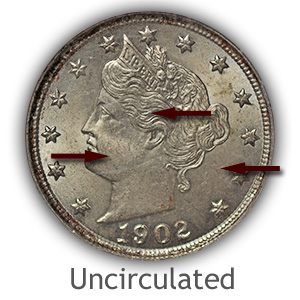
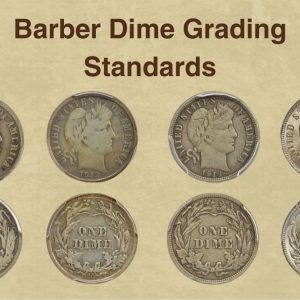
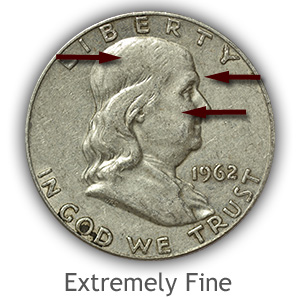
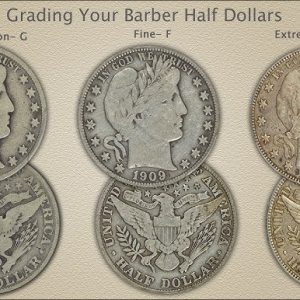
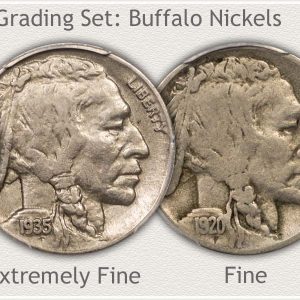
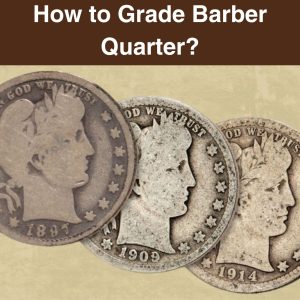
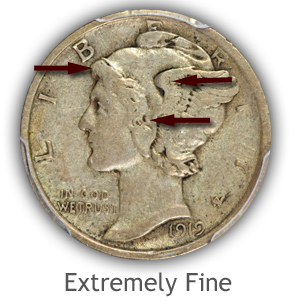

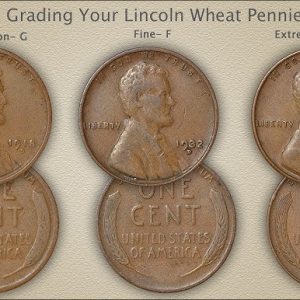
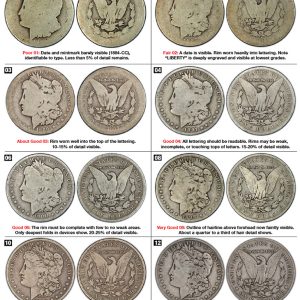
How much does PCGS charge to grade coins?
The cost to grade a coin with PCGS varies by the coin’s value and desired turnaround time, but typically ranges from about $22-$38 for common coins to over $100 for valuable ones, plus a handling fee and shipping costs. For example, grading a coin valued at $300 or less costs about $22, while a coin valued at $2,500 or less costs around $38. You must also be a PCGS member, which has its own costs.
Can I get my coin graded for free?
You can get a free online appraisal or photographic evaluation from some dealers, but officially grading a coin for professional authentication and encapsulation costs money. While some companies offer free online services for you to get an idea of your coin’s condition, these are not official grading services and will not result in a professional certification.
How to tell if an Indian Head Penny is valuable?
An Indian head penny’s value comes from its rarity, condition, and historical significance, not its metal content. Key factors include the specific mint year, as some dates are much rarer than others (especially early years like the 1877 and 1909-S), the coin’s overall preservation and grade, and any rare varieties or errors. Coins in excellent condition or those with key dates will be more valuable to collectors.
Can I grade a coin myself?
Although it is possible to learn to grade coins yourself, it will take years of experience to do it correctly. In our experience, many collectors think their coins are in a better condition than they actually are � so always be on your guard.